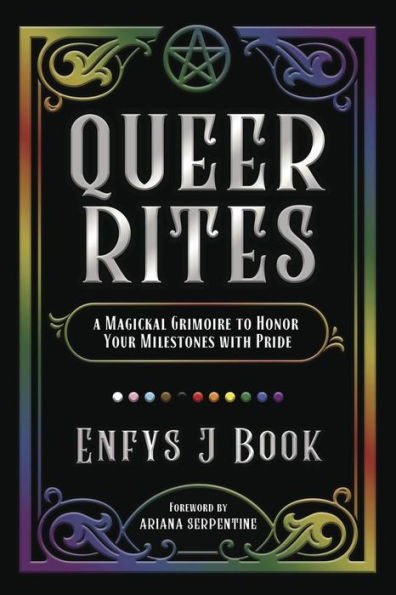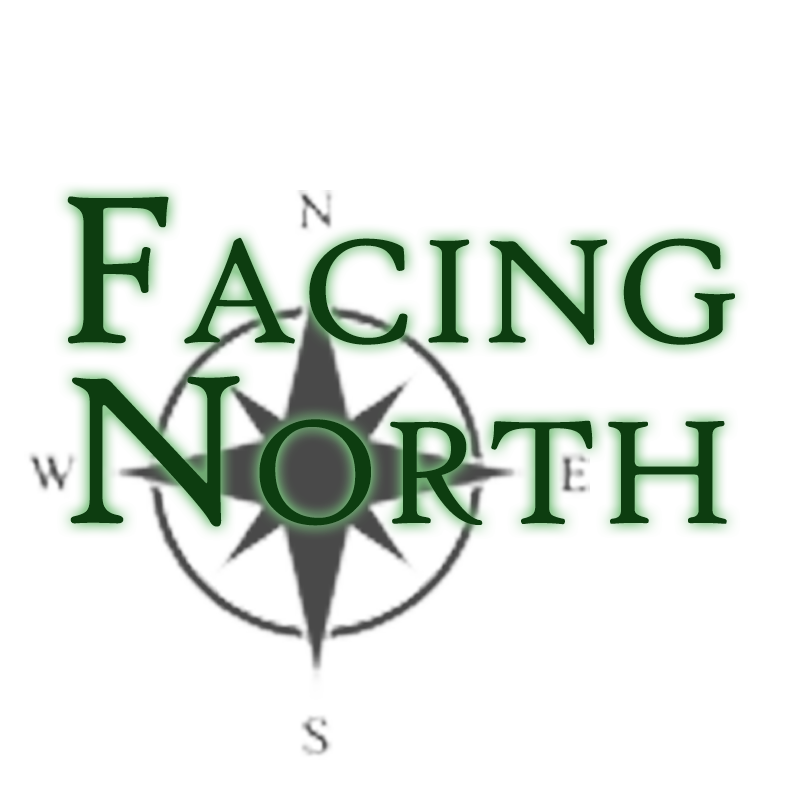In a guest post on author Chuck Wendig’s blog, Terribleminds, Enfys J. Book describes the process of writing Queer Rites: A Magickal Grimoire to Honour your Milestones with Pride as both “satisfying and bittersweet” - it's a book they could have used when they were younger. I think that is going to be true for many of the people who read it, as it was for me.
The first chapter in Part 1, Ritual Basics, does a solid job of laying out the components of ritual (e.g., format, correspondences, timing), and mentions that notes on some rituals include tips on adapting the largely solo rituals in the book for group work and work done for another. The author discusses working with spirit and deities as working with “partners and energies,” a turn of phrase I particularly enjoyed for its inclusive neutrality. The mystical is interwoven with practical advice on materials, setting up ritual space, and encouragement to make the rituals the reader’s own by using the correspondences, partners and energies, and materials that work best for them. There is enough practical explanation to make this book appropriate for a beginner to ritual practice, and enough depth to engage a seasoned practitioner.
In the next chapter, Book instructs the reader on the basics of performing a ritual, from the arrangement and the physical and energetic cleansing and grounding of the space, the self and ritual materials, through what to do after a ritual is complete. Again, their approach is content-neutral and is a gentle introduction to grounding and centering, creating the “ritual container” or circle, and then discusses the purpose and intent of each portion of ritual. The What to do After Ritual section in this chapter contains useful advice for supporting oneself post-ritual, including offerings, mindfulness practice, journaling, and discusses how the energetic and psychological shifts created by intense ritual work require support, even the professional support of a therapist.
The remainder of the book is pure grimoire, with rituals in Part 2 grouped in chapters according to the subject and intent of each. Each ritual is presented within a standardized framework that the reader will appreciate and become familiar with. Several of the rituals are written by guest writers, which points to the richness of community connections present in 2SLGBTQIA+ life experiences.
As a community that rarely sees itself reflected in the dominant culture, the grimoire section fittingly begins with chapter 3’s Personal Rites for Identity Exploration and Affirmation. These rituals are recommended for anyone of any gender of any age to use to explore their gender and sexuality, and I see particular use, for instance, for the Sexuality Affirmation Ritual for queer people who may be late bloomers taking their first steps into their queer identities as older adults.
Chapter 4, Rites for New Experiences, is an important celebration of the many “firsts” that queer people experience, including going to your first political action. The ritualization of first experiences is common among many cultures, including Christianity, but as Ariana Serpentine states in the foreword to this book, “Many of the milestones that are celebrated in modern Western society are ones that are complicated for queer people.” This is the chapter where the author’s intention to create a resource for their younger self is evident.
But not all is celebration and affirmation, which Book acknowledges in chapter 5, Rites for Release and Healing. The tender offerings in this chapter include a Funeral for your Deadname, and rituals to both sever ties and to reconnect with family and friends that go beyond the standard cord-cutting. Having these rifts acknowledged and then being given ritual tools to help with those boundaries can be a great comfort and support to the many queer and trans folks who are estranged from family and friends, out of necessity, willingly, or otherwise.
Chapter 6: Celebrations rounds out the book and the beautiful Chosen Family Hearth RItual is something I would like to do with the members of my own chosen family. The Rite of Infinite Hearts provides an inclusive handfasting ritual for two or more people, making this book polyamory-inclusive. And of course, there is a ritual to celebrate coming out, which is a uniquely queer experience at this point in history.
This leads me to what I truly appreciated about this book: the author didn’t focus on “queering” established practice, but creating new traditions and rituals to affirm and celebrate the 2SLGBTQIA+ community’s unique rites of passage and transition. As an example, as someone who has recently changed their name and pronouns I had intended to write a ritual to celebrate when I transitioned socially, and then again when I got my new documents. However, the process was so grueling and expensive, and so full of strong emotions, that it’s something I’ve yet to do almost two years after getting my updated certificates in the mail. This book offers a reader like myself a ritual template for each, as well as rituals for taking on a drag or a sex work persona, among many other important milestones.
The focus on the queer experience in Queer Rites feels like a love letter to the author’s younger self and to every queer pagan past, present, and future. It was a pleasure to read a book and feel so seen in this book’s pages. Their methodology of community consultation has made this a rich resource with a variety of perspectives, Queer Rites is author Enfys J. Book’s third offering from Llewellyn, and I hope not their last.
~ review by Ursula Mogensen
Author: Enfys J. Book
Llewellyn Worldwide, 2025
240 pg., $17.99

